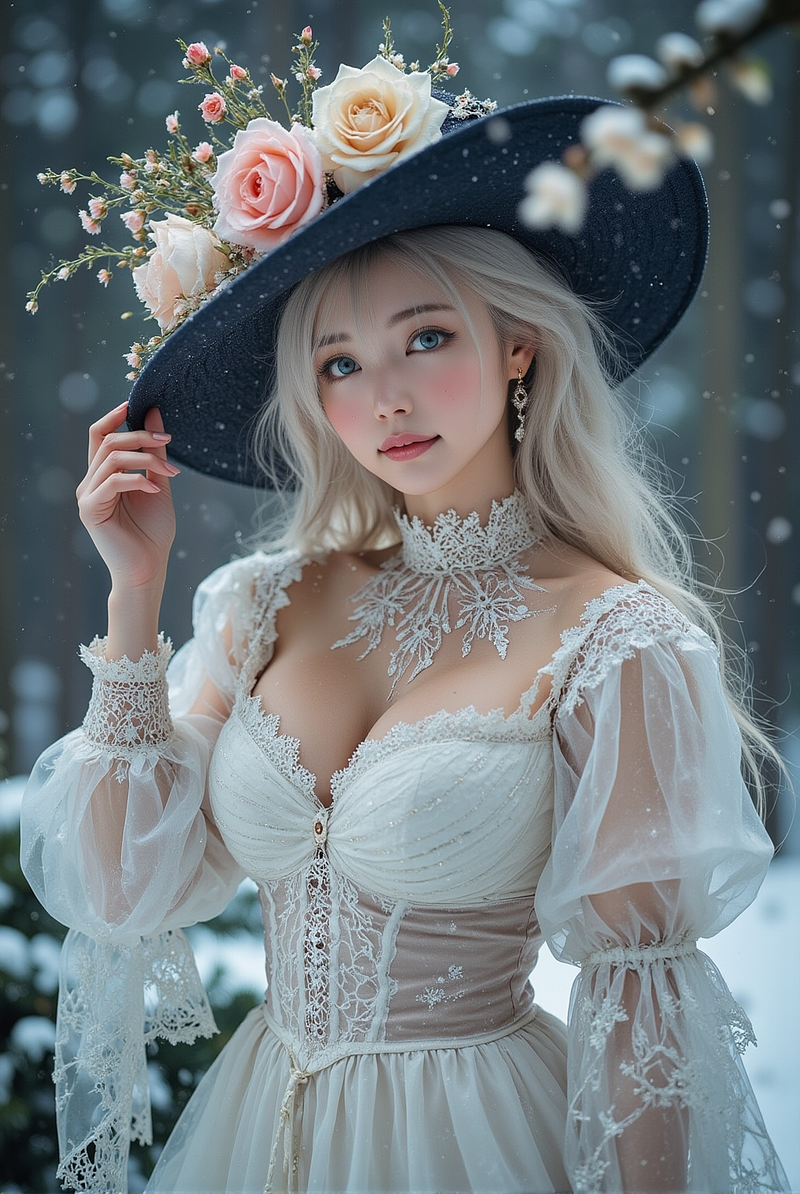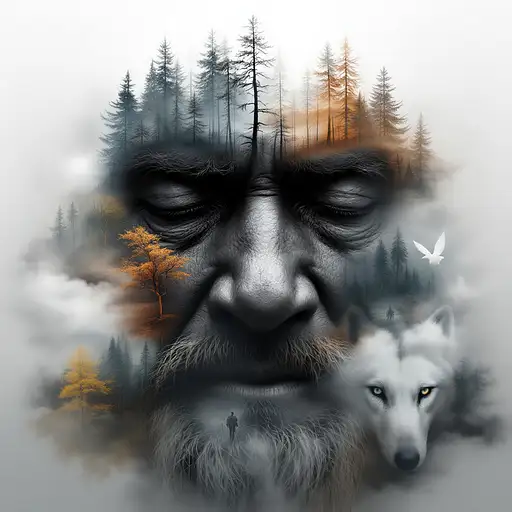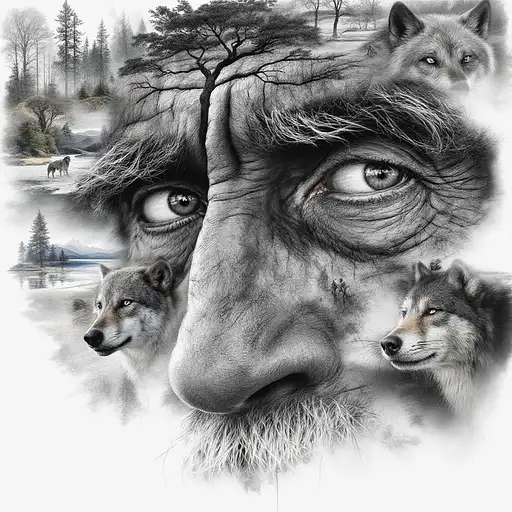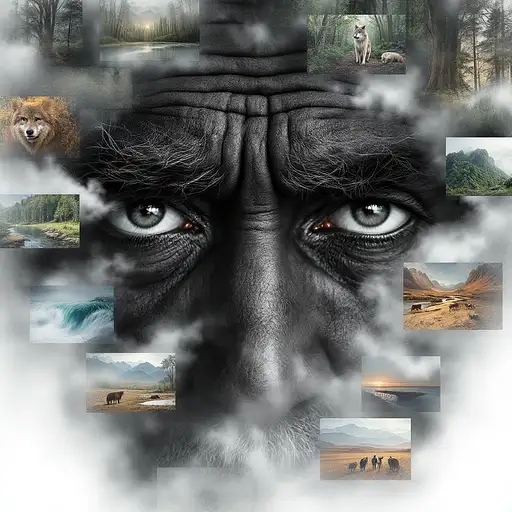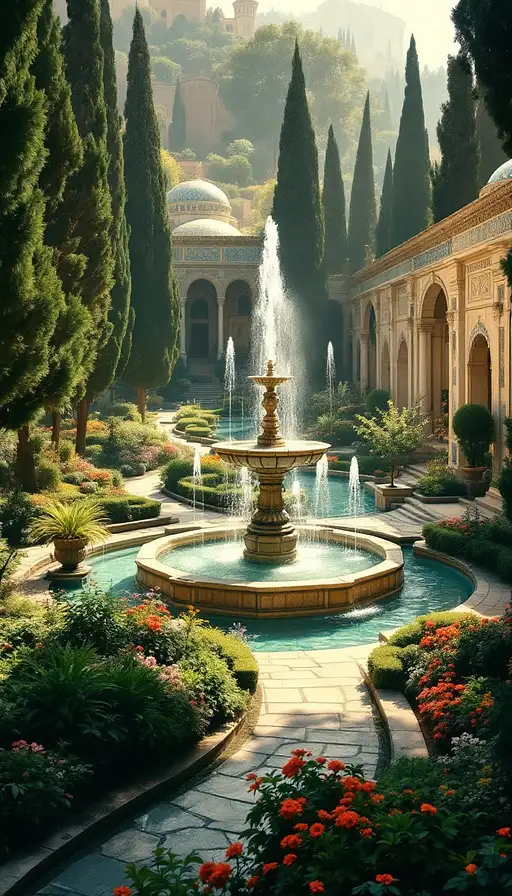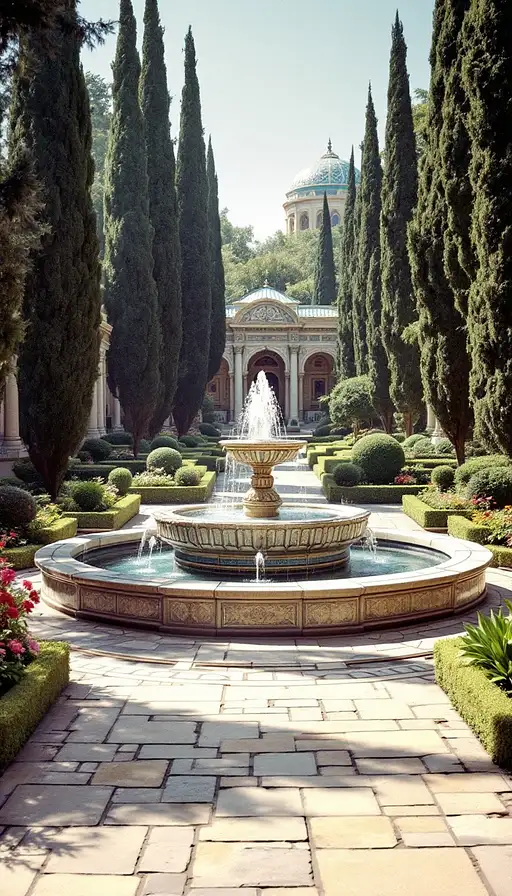2 months ago
This is an enchanting, almost fantastical portrait of a young japanese woman in a winter wonderland.
The Woman (Central Subject):
Facial Features: She has striking, luminous pale blue eyes that are wide and doll-like, heavily framed by dark, long eyelashes and defined eyebrows. Her skin is fair, almost porcelain, with a subtle rosy blush on her cheeks. Her lips are a soft, natural pink, slightly parted. Her expression is playful, as she bite her index finger with her teeth.
Hair: Her hair is exceptionally long, cascading well past her waist in voluminous, soft waves. It's a striking platinum blonde, almost white, which blends seamlessly with the snowy surroundings.
Attire - Hat: She wears a prominent, wide-brimmed, flat-crowned hat (similar to a boater or a modified witch's hat) made of a dark, possibly navy blue or charcoal grey, textured material. The hat is dusted with fine snowflakes. Its crown and brim are adorned with a beautiful arrangement of flowers:
Large roses in shades of soft pink and creamy white are the main floral elements.
Delicate sprigs with smaller pink blossoms (resembling cherry or apple blossoms) extend outwards from the floral arrangement, adding a touch of whimsical asymmetry.
Attire - Dress: She is dressed in an ethereal, vintage-inspired white or ivory gown.
The bodice features a sweetheart neckline overlaid with a sheer, high-necked panel adorned with intricate lace or embroidered detailing, particularly around the collar and down the center of the chest. This lace has a delicate, almost crystalline appearance.
The sleeves are long and made of a sheer, gauzy fabric, with elaborate lace appliqués at the cuffs that resemble frost or snowflake patterns.
The waist is cinched, and the skirt flows softly, made of a light, possibly chiffon-like material, also lightly dusted with snowflakes.
The Setting & Atmosphere:
Environment: She stands in a snowy, wooded area. The background is softly blurred, showing snow-covered ground and the dark, indistinct shapes of trees, creating a strong sense of depth.
Snowfall: Soft, out-of-focus snowflakes are visibly falling throughout the scene, adding to the magical, wintry atmosphere. Some larger, more distinct snowflakes are caught in the foreground.
Lighting: The lighting is cool and diffused, typical of an overcast winter day, which enhances the pale color palette and the dreamlike quality of the image. There are no harsh shadows.
Color Palette: The dominant colors are cool whites, soft blues (in the shadows of the snow and the hat), and the delicate pinks and creams of the flowers, creating a harmonious and serene visual experience.
Photographic Qualities & Mood:
Focus: The woman, particularly her face and the hat, is in sharp focus, while the background and the falling snow are softly blurred, creating a shallow depth of field that emphasizes her as the subject.
Composition: She is centrally framed in a vertical portrait orientation.
Overall Mood: The image evokes a sense of enchantment, delicate beauty, and serene fantasy. She appears like a snow queen, a winter fairy, or a character from a fairytale, where the unexpected bloom of flowers in a snowy landscape adds to the magical realism.

